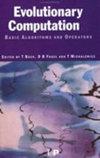分类中双目标特征选择的三目标方法
IF 3.4
2区 计算机科学
Q2 COMPUTER SCIENCE, ARTIFICIAL INTELLIGENCE
引用次数: 0
摘要
最小化所选特征的数量和最大化分类性能是特征选择的两个主要目标,这可以表述为一个双目标优化问题。由于特征之间存在复杂的相互作用,目标值较差的解决方案(即特征子集)并不意味着其选择的所有特征都是无用的,因为其中一些特征与其他互补特征相结合可以大大提高分类性能。因此,不仅要考虑特征子集在目标空间中的表现,还要考虑它们在搜索空间中的差异,以探索更有前景的特征组合。为此,本文提出了一种用于分类中双目标特征选择的三目标方法,该方法通过考虑搜索空间中特征子集之间的多样性(差异)作为第三个目标,将双目标特征选择问题作为三目标问题来解决。基于转换后的三目标方法进行的选择可以在最小化所选特征数量、最大化分类性能和探索更有前景的特征子集之间保持平衡。此外,还提出了一种新颖的初始化策略和子代繁衍算子,以分别促进目标空间中特征子集的多样性和提高搜索能力。将所提出的算法与五种基于多目标的特征选择方法、六种典型特征选择方法以及两种以多样性为辅助目标的同类方法进行了比较。在 20 个真实世界分类数据集上的实验结果表明,所提出的方法在大多数情况下都优于所比较的方法。本文章由计算机程序翻译,如有差异,请以英文原文为准。
A Tri-Objective Method for Bi-Objective Feature Selection in Classification
Minimizing the number of selected features and maximizing the classification performance are two main objectives in feature selection, which can be formulated as a bi-objective optimization problem. Due to the complex interactions between features, a solution (i.e., feature subset) with poor objective values does not mean that all the features it selects are useless, as some of them combined with other complementary features can greatly improve the classification performance. Thus, it is necessary to consider not only the performance of feature subsets in the objective space, but also their differences in the search space, to explore more promising feature combinations. To this end, this paper proposes a tri-objective method for bi-objective feature selection in classification, which solves a bi-objective feature selection problem as a tri-objective problem by considering the diversity (differences) between feature subsets in the search space as the third objective. The selection based on the converted tri-objective method can maintain a balance between minimizing the number of selected features, maximizing the classification performance, and exploring more promising feature subsets. Furthermore, a novel initialization strategy and an offspring reproduction operator are proposed to promote the diversity of feature subsets in the objective space and improve the search ability, respectively. The proposed algorithm is compared with five multiobjective-based feature selection methods, six typical feature selection methods, and two peer methods with diversity as a helper objective. Experimental results on 20 real-world classification datasets suggest that the proposed method outperforms the compared methods in most scenarios.
求助全文
通过发布文献求助,成功后即可免费获取论文全文。
去求助
来源期刊

Evolutionary Computation
工程技术-计算机:理论方法
CiteScore
6.40
自引率
1.50%
发文量
20
审稿时长
3 months
期刊介绍:
Evolutionary Computation is a leading journal in its field. It provides an international forum for facilitating and enhancing the exchange of information among researchers involved in both the theoretical and practical aspects of computational systems drawing their inspiration from nature, with particular emphasis on evolutionary models of computation such as genetic algorithms, evolutionary strategies, classifier systems, evolutionary programming, and genetic programming. It welcomes articles from related fields such as swarm intelligence (e.g. Ant Colony Optimization and Particle Swarm Optimization), and other nature-inspired computation paradigms (e.g. Artificial Immune Systems). As well as publishing articles describing theoretical and/or experimental work, the journal also welcomes application-focused papers describing breakthrough results in an application domain or methodological papers where the specificities of the real-world problem led to significant algorithmic improvements that could possibly be generalized to other areas.
 求助内容:
求助内容: 应助结果提醒方式:
应助结果提醒方式:


